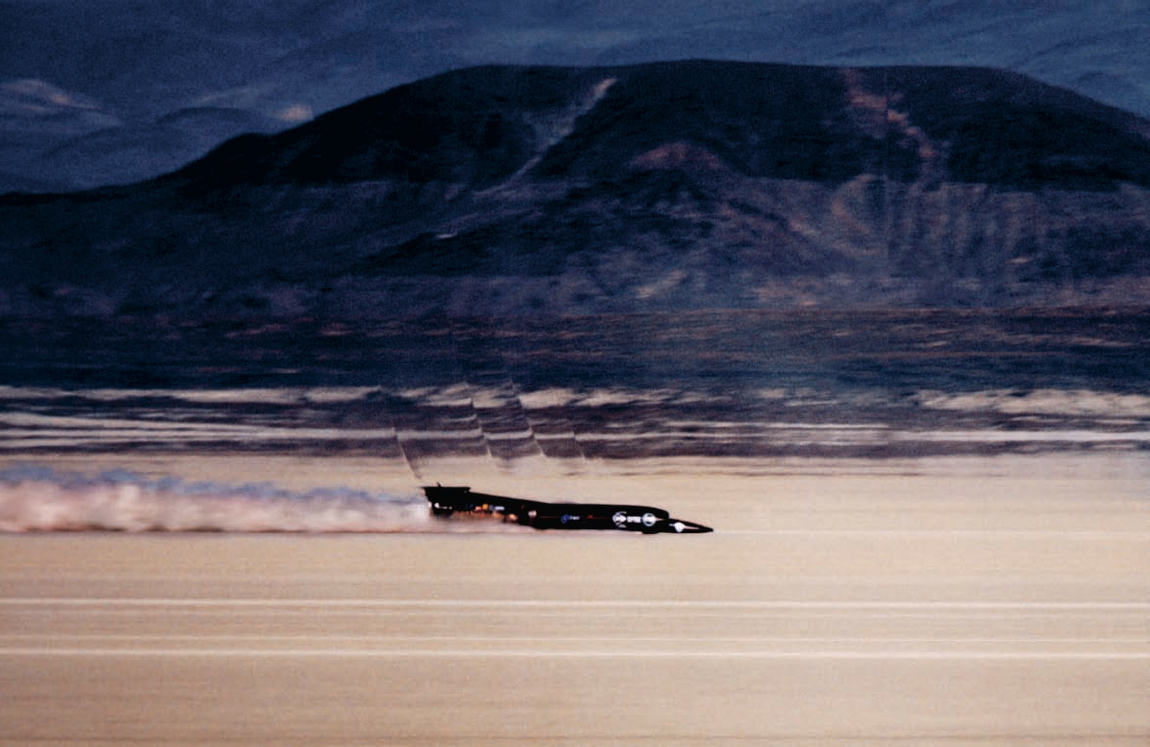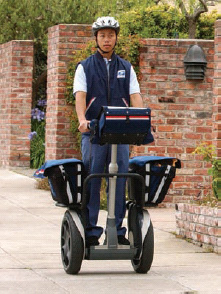
What was the danger to the wheels?
The answer is in this lesson.
The current land-speed record was set in the Black Rock Desert of Nevada in 1997 by the jet-powered car Thrust SSC. The car’s speed was 1222 km/h in one direction and 1233 km/h in the opposite direction. Both speeds exceeded the speed of sound at that location (1207 km/h), and you can see that the car was supersonic (faster than sound) by the distortions above the car in the photograph. The distortions were due to shock waves produced in the air by the car, just as shock waves are produced by supersonic aircraft. Setting the land-speed record was obviously very dangerous for many reasons. One of them had to do with the car’s wheels.

Fig. 11-1 The self-righting Segway Human Transporter.
What Is Physics?
As we discussed in Lesson 10, physics includes the study of rotation. Arguably, the most important application of that physics is in the rolling motion of wheels and wheel-like objects. This applied physics has long been used. For example, when the prehistoric people of Easter Island moved their gigantic stone statues from the quarry and across the island, they dragged them over logs acting as rollers. Much later, when settlers moved westward across America in the 1800s, they rolled their possessions first by wagon and then later by train. Today, like it or not, the world is filled with cars, trucks, motorcycles, bicycles, and other rolling vehicles.
The physics and engineering of rolling have been around for so long that you might think no fresh ideas remain to be developed. However, skateboards and in-line skates were invented and engineered fairly recently, to become huge financial successes. Street luge is now catching on, and the self-righting Segway (Fig. 11-1) may change the way people move around in large cities. Applying the physics of rolling can still lead to surprises and rewards. Our starting point in exploring that physics is to simplify rolling motion.

Fig. 11-2 A time-exposure photograph of a rolling disk. Small lights have been attached to the disk, one at its center and one at its edge. The latter traces out a curve called a cycloid.
Leave a Reply